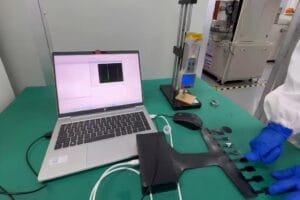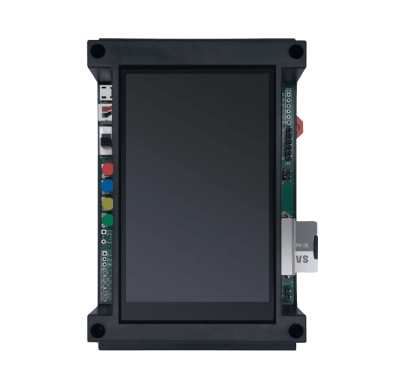Foot Scan Insole Systems: Reforming Biomechanical Analysis

Understanding Pressure Sensors
Foot Scan Insole Systems: A Comprehensive Analysis Tool
Foot scan insole systems take pressure sensing to the next level by integrating arrays of pressure sensors into customizable insoles. These insoles are designed to fit inside footwear and provide real-time data on foot pressure distribution, gait analysis, and biomechanical abnormalities.
By mapping the forces acting on the foot, foot scan insole systems offer clinicians and researchers a comprehensive tool for diagnosing foot conditions, optimizing orthotic interventions, and tracking treatment progress.
Applications in Clinical Practice
Pressure sensors and foot scan insole systems have revolutionized clinical practice by providing invaluable assistance in the diagnosis and treatment of a wide range of foot-related conditions. Podiatrists and orthopedic specialists now rely on these cutting-edge technologies to assess foot posture, identify pressure points, and detect abnormalities in gait patterns.
The analysis of pressure data obtained from these systems allows clinicians to prescribe highly tailored orthotic interventions, resulting in pain alleviation, correction of imbalances, and overall improvement in foot function.

One of the key benefits of pressure sensors and foot scan insole systems is their ability to assess foot posture accurately. By capturing the distribution of forces exerted on the foot during walking or running, these technologies offer insights into weight-bearing patterns and abnormalities.
Podiatrists can identify areas of excessive pressure or high-impact zones, which often indicate potential foot problems. This information is crucial for developing targeted treatment plans and preventing the progression of foot conditions.
Moreover, pressure sensors and foot scan insole systems help clinicians identify pressure points, which are areas on the foot where pressure is concentrated. By detecting these points, clinicians can determine if there is excessive pressure on specific regions, leading to discomfort, pain, or even the development of foot ulcers.
Armed with this knowledge, appropriate interventions can be designed to redistribute pressure and alleviate discomfort, preventing the occurrence of long-term complications.
Abnormalities in gait patterns can also be accurately detected through the analysis of pressure data obtained from these systems. Gait abnormalities can result from various factors, such as musculoskeletal imbalances or neurological conditions.
By identifying these abnormalities, clinicians can gain insights into the underlying causes of gait issues and develop targeted treatment plans. This may involve orthotic interventions, which can correct foot positioning, provide support, and improve overall gait mechanics.

The ability to analyze pressure data obtained from pressure sensors and foot scan insole systems enables clinicians to prescribe orthotic interventions with a high level of customization. Each patient’s foot is unique, and a one-size-fits-all approach may not be effective in addressing individual needs.
By tailoring orthotics based on pressure data, clinicians can design interventions that specifically address the patient’s foot posture, pressure points, and gait abnormalities. This personalized approach ensures optimal comfort, support, and functionality, resulting in improved foot function and reduced pain.
Enhancing Sports Performance
The insights provided by pressure sensors and foot scan insole systems offer significant benefits to athletes, regardless of their level of expertise. These technologies have become a valuable tool for trainers and coaches in assessing an athlete’s biomechanics, identifying potential weaknesses, and optimizing training regimens.
By analyzing foot pressure distribution, trainers and coaches gain valuable information about an athlete’s movement patterns and weight distribution during various activities, such as running, jumping, or cutting.
This data allows them to identify areas of high pressure or imbalances that may lead to inefficient movement or increased risk of injury. Armed with this knowledge, coaches can develop targeted training programs to address these weaknesses, improve technique, and enhance overall performance.
One of the key advantages of pressure sensors and foot scan insole systems is their ability to fine-tune an athlete’s technique. By analyzing foot pressure distribution, coaches can identify areas of excessive pressure or inefficient force transfer.
This information enables them to provide specific feedback and guidance to athletes, helping them optimize their movements and achieve better performance outcomes. Whether it’s correcting foot positioning, adjusting stride length, or optimizing weight distribution, these technologies allow coaches to make precise recommendations that lead to more efficient and effective movements.

Injury prevention is another crucial aspect where pressure sensors and foot scan insole systems play a vital role. By monitoring foot pressure distribution, coaches can detect early signs of overloading or repetitive stress on certain areas of the foot.
This information helps in identifying potential injury risks and allows for timely interventions, such as adjusting training loads, modifying footwear, or implementing corrective exercises. By addressing these issues proactively, coaches can significantly reduce the likelihood of injuries and keep athletes performing at their best.
Real-time monitoring and adjustment of foot positioning is another significant advantage offered by pressure sensors integrated into sports shoes. These sensors provide athletes with immediate feedback on their foot pressure distribution and alignment.
Athletes can use this real-time data to make adjustments to their technique, foot positioning, or weight distribution during training or competition. This not only promotes better efficiency and performance but also helps reduce fatigue by optimizing foot mechanics and minimizing unnecessary strain on specific areas of the foot.
Future Implications
As technology continues to evolve, pressure sensors and foot scan insole systems are likely to become even more sophisticated and accessible. Advancements in wireless communication, miniaturization, and data analytics will further enhance the capabilities of these systems.
With the integration of artificial intelligence and machine learning algorithms, foot scan insole systems may be able to provide real-time feedback, personalized recommendations, and predictive analytics for injury prevention and performance optimization.

Flexniss: Helping The World At Its Feet
Pressure sensors and foot scan insole systems have revolutionized biomechanical analysis, providing clinicians, researchers, and athletes with valuable insights into foot function and gait patterns. These technologies have become integral in clinical practice, sports performance enhancement, and research studies.
The ability to measure pressure distribution across the foot enables precise diagnoses, customized interventions, and evidence-based advancements in the field. As we look towards the future, the continued development of pressure sensors and foot scan insole systems promises to unlock even greater potential for improving human movement and foot-related health.
To gain further insights into foot scan insole systems and pressure sensors, we encourage you to reach out to our team at Flexniss. As leading providers of high-quality pressure sensor systems, we offer comprehensive solutions for a wide range of applications. Our team is dedicated to delivering exceptional products and expertise in the field. Feel free to connect with us to learn more about how our pressure sensor systems can benefit your specific needs.















